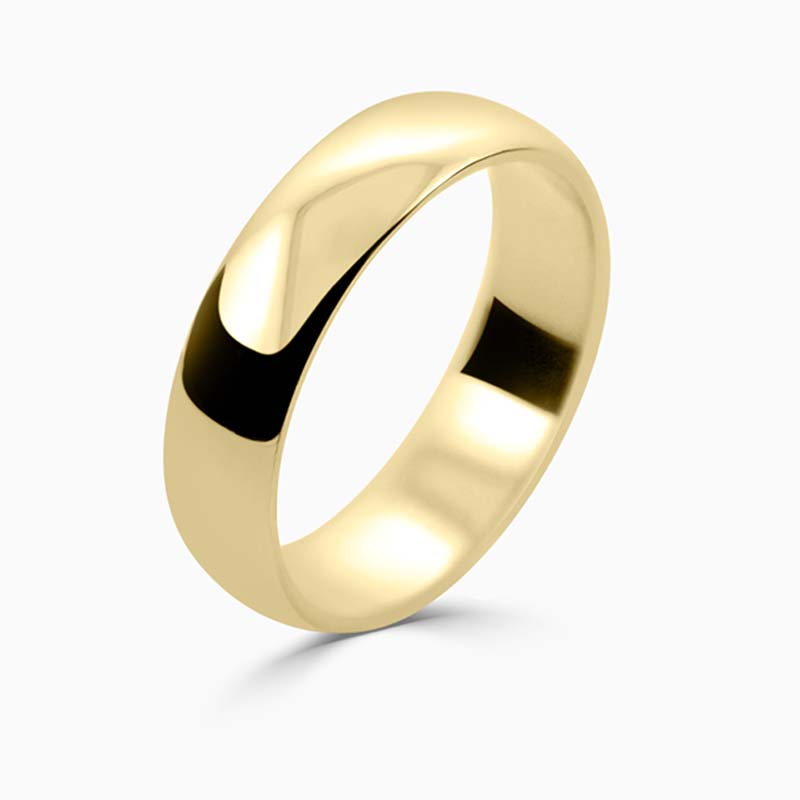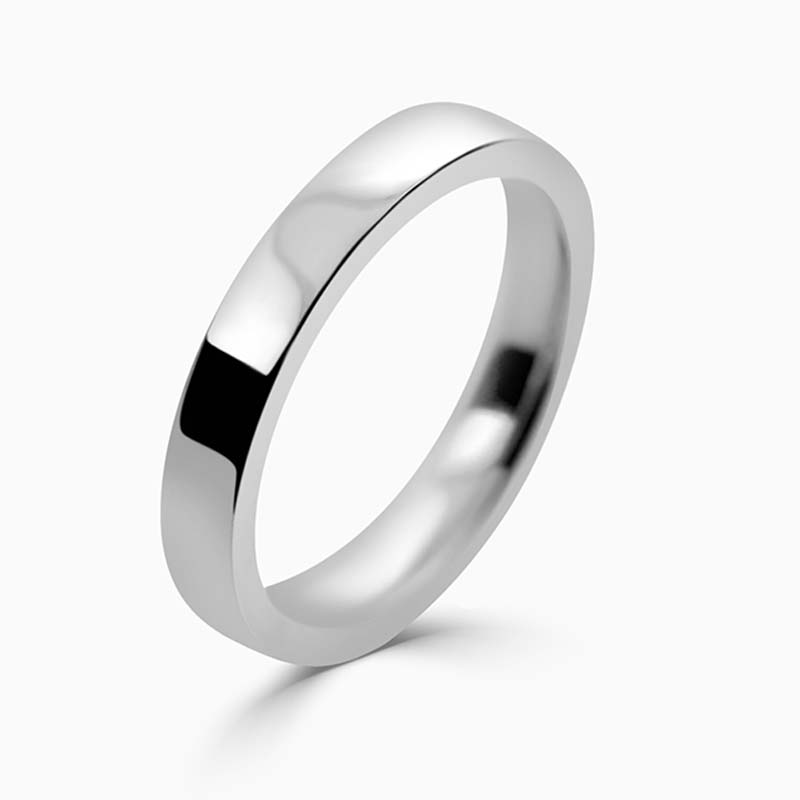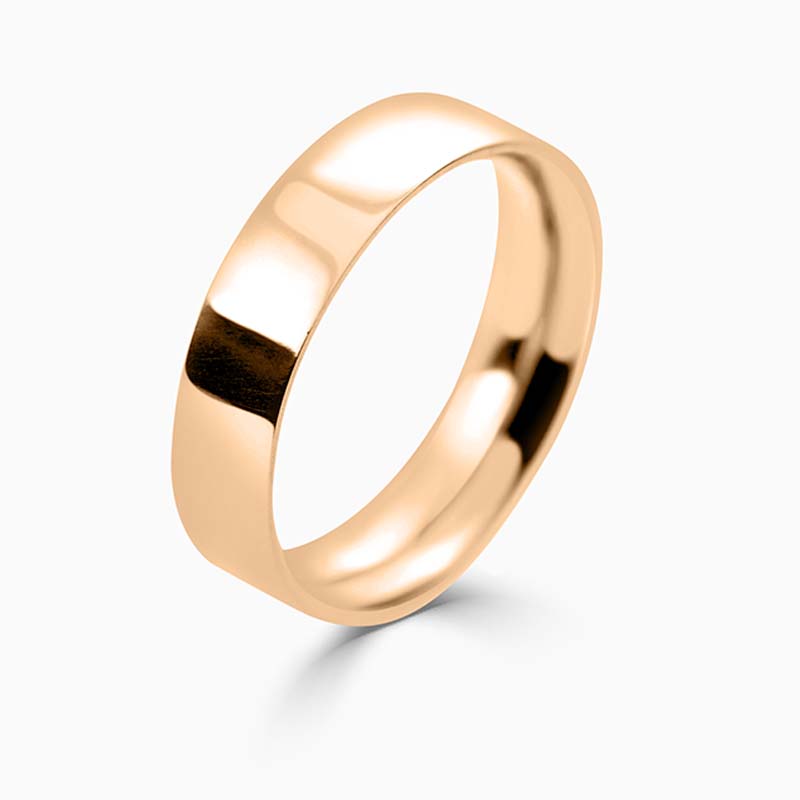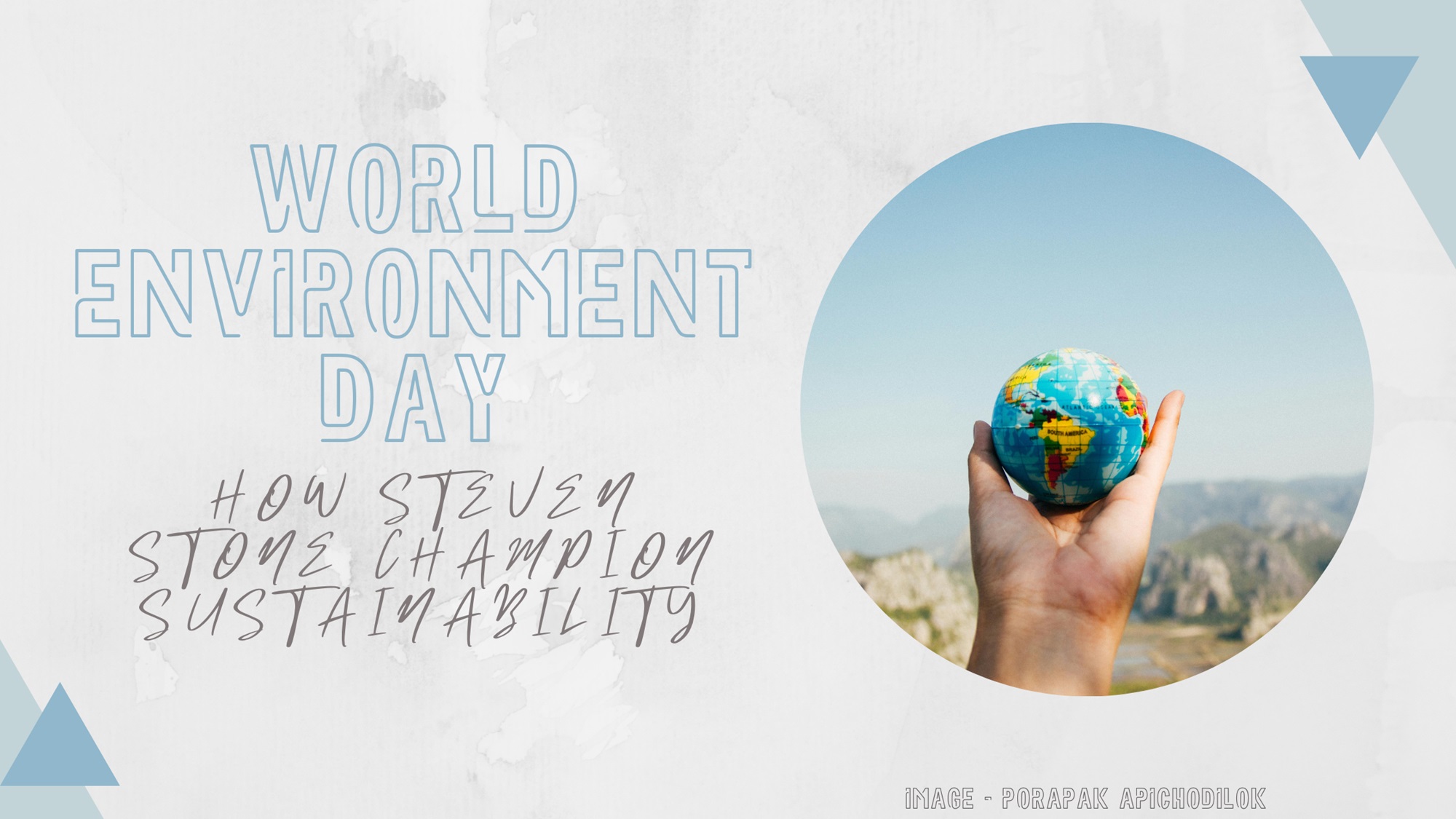While it’s hard to believe, the gold jewellery we wear every day actually comes from the stars – and the science behind how it’s created is pretty magical.
All of the gold that’s deposited in our planet was formed during the explosions of stars and collisions of asteroids, and eventually found its way to earth over time.
Today, gold is one of the most valuable precious metals and rarest natural minerals. It is also one of the 118 elements so far discovered and classified by humans. Pure gold is a bright warm yellow, malleable and soft substance. It’s so soft that, in its purest form, it can’t really be used for everyday wear.
To harden it, it is alloyed with a mixture of metals like silver, copper, platinum, palladium and zinc. Its primary use is in jewellery, but it’s also used in finance, electronics, computers, dentistry, medicine, aerospace, glassmaking, and as awards and status symbols. It’s clearly present in the formation and upkeep of many of our innovations.
But how is gold made? Fine jewellery experts at Steven Stone have revealed everything there is to know in a handy guide…
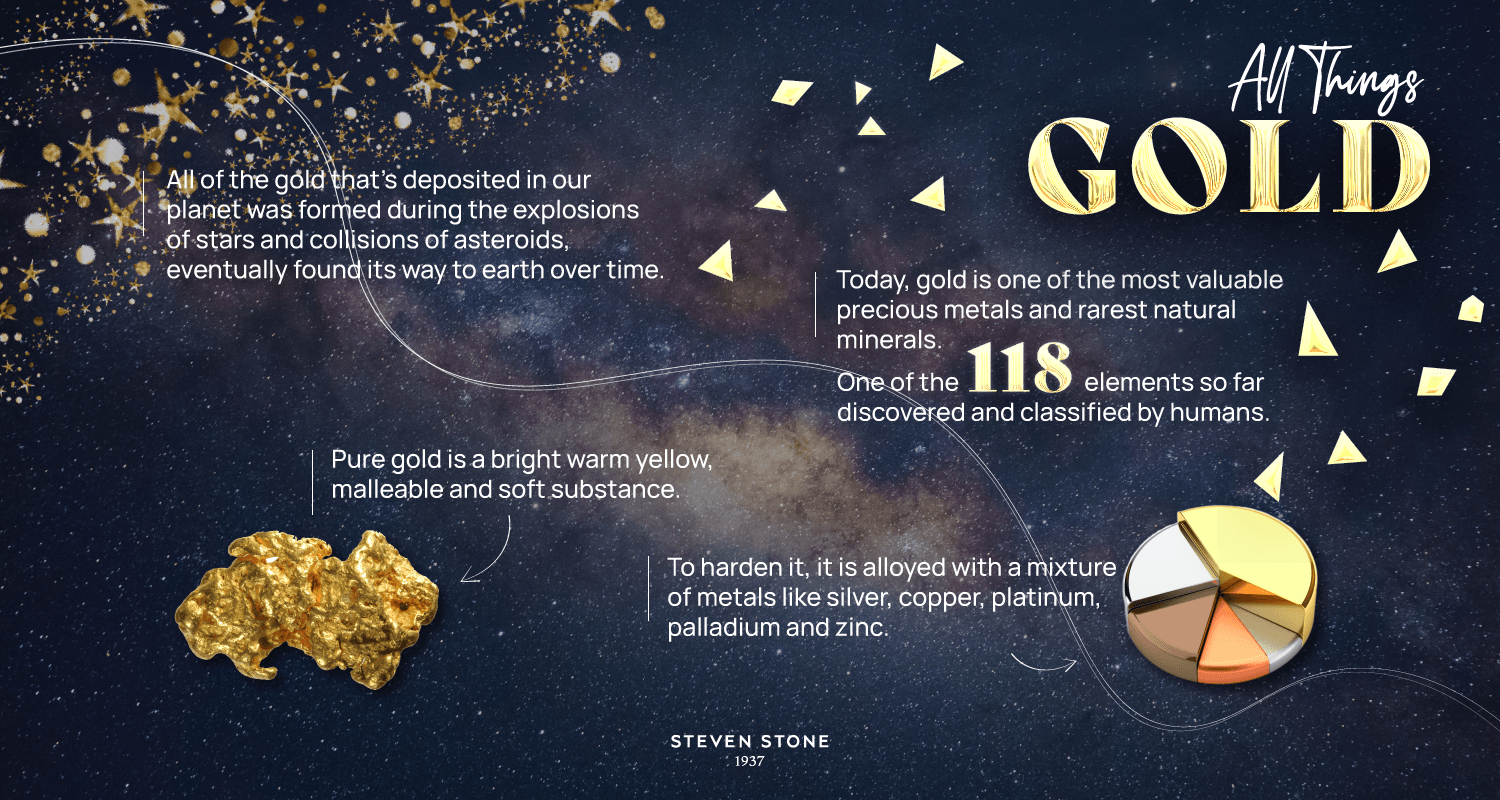
How is gold formed?
There are two main theories about how gold is originally formed, both involving stars. One involves the explosion of supernova stars and the resulting nuclear fusion creating atoms of gold, and the other, the collision of neutron stars that results in a gamma-ray burst, one of the most powerful explosions possible.
In August 2017, the presence of heavier elements, including gold, was detected using gravitational wave detectors during the first observation of the collision of two neutron stars. What these two events have in common is the presence of nuclear energy, which is required to combine lighter atoms into heavier ones.
Where is gold found?
In its natural form, it is found deep in the layers of the earth where it is transported by water, molten lava and volcanic eruptions, and earthquakes. Geologists have found gold in rocks as old as 4.5 billion years ago.
The Witwatersrand, one of the most gold-rich mining areas in the world, is located in a 300km radius crater in southern Africa, thought to have been caused by a meteor strike over 2 billion years ago.

This theory reinforces the idea that gold was brought to earth from the cosmos by asteroids. There’s also a higher concentration of the element in the earth’s crust than scientists initially expected, lending further support to the idea that a large proportion of the mineable gold on earth was delivered by asteroids that impacted on the surface.
Gold is also found in our oceans. All the water in the seas and oceans of earth is believed to hold a cumulative total of between 10 and 20 million tons of gold, mostly diluted in water at a tiny concentration level. It can also be made synthetically, but the process requires nuclear reactions that make it prohibitively expensive and impractical to produce and sell for its current uses.
According to estimates, all of the gold ever mined in the history of humanity amounts to about 152,000 metric tons. This sounds like a lot, but it is only about enough to fill up 60 trailers. Scientists believe that there is still eight times more gold in and under the oceans than has ever been mined close to the planet’s surface. Like the gold that is probably floating in the Earth’s molten core, most of this supply of the precious metal is inaccessible or simply too expensive to mine. Interestingly, gold has been discovered on all of Earth’s continents except for Antarctica. Of course, it is possible that even that continent holds some gold under all of the ice.
How is gold processed?
Once the gold has been found and mined from its source, whether that’s a dedicated goldmine or not, it needs to be processed to become ready for use in gold jewellery. Gold can be recovered from ore in a few ways.
These include amalgamation and cyanidation. Cyanidation is most popular and involves oxidising and dissolving gold in alkaline cyanide and separating the resulting gold solution from the solids. It then has to be refined by removing all the impurities in the substance, which involves either melting and treating it with gas chlorine or using electrolysis. It is then tested for purity with 99.9% purity used as the benchmark.
Once gold has been processed and refined, it’s ready for use in whatever product it was mined for, whether that’s electronics, dentistry, aerospace, or any of the other applications for gold.
However, processed gold has a range of qualities that make it particularly perfect for jewellery, including malleability, rich colouring, and shininess.
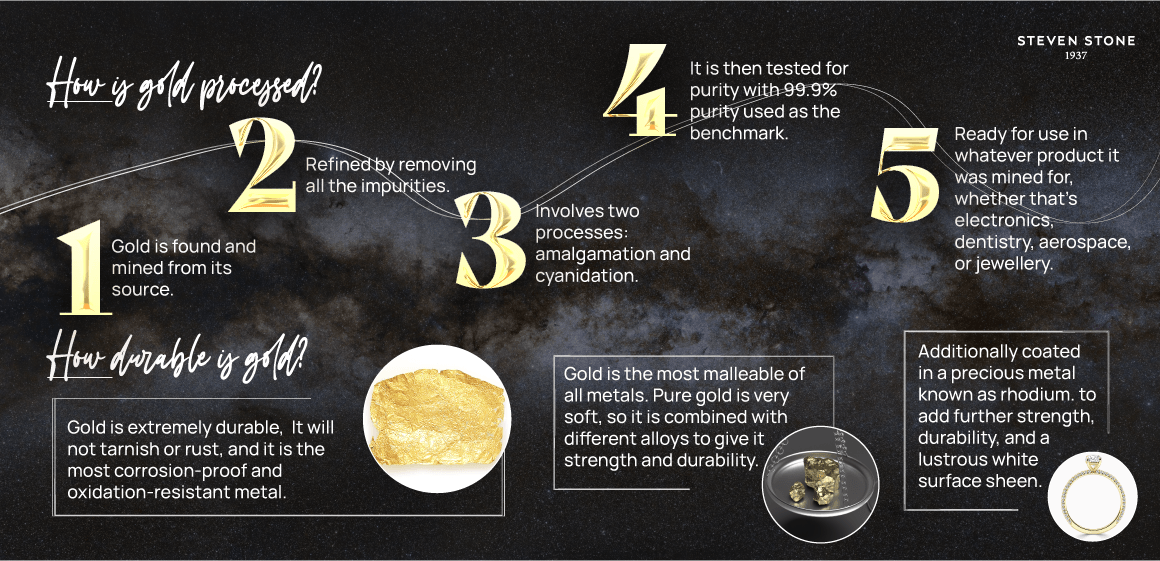
How durable is gold?
Gold is extremely durable, which is why it’s so popular for jewellery. It will not tarnish or rust, and it is the most corrosion-proof and oxidation-resistant metal.
Although it is very strong, gold is the most malleable of all metals, meaning it can be hammered or pressed into shape without breaking or cracking. However, pure gold is too soft to withstand the stresses of everyday wear, so it is combined with different alloys to give it strength and durability. These alloys include metals like silver, copper, nickel, and zinc. The carat weight of gold is noted by a number, followed by a “c” or “ct,” that indicates how much of the metal in a piece of jewellery is gold.
In the UK, gold jewellery ranges from 9ct to 24ct, with 9ct being the most afforable option and 24ct being the highest quality.
Many engagement rings are made from white gold, which consists of pure yellow gold, mixed with alloy metals that have a silvery-white colour, such as palladium and silver.
It is additionally coated in a precious metal known as rhodium, which derives from the same metal family as platinum. This coating adds further strength and durability, and most importantly, a really lustrous white surface sheen, making it the ideal metal to coat and protect an engagement ring, wedding ring, and other fine jewellery.
If you’re interested in finding out about the different types of gold used in jewellery, why not drop us a line? Our expert team are on hand to help you create bespoke pieces that offer both beauty and longevity.
Follow us on our socials
Pop over to our social platforms to keep up to date with Steven Stone’s latest jewellery content and news.

